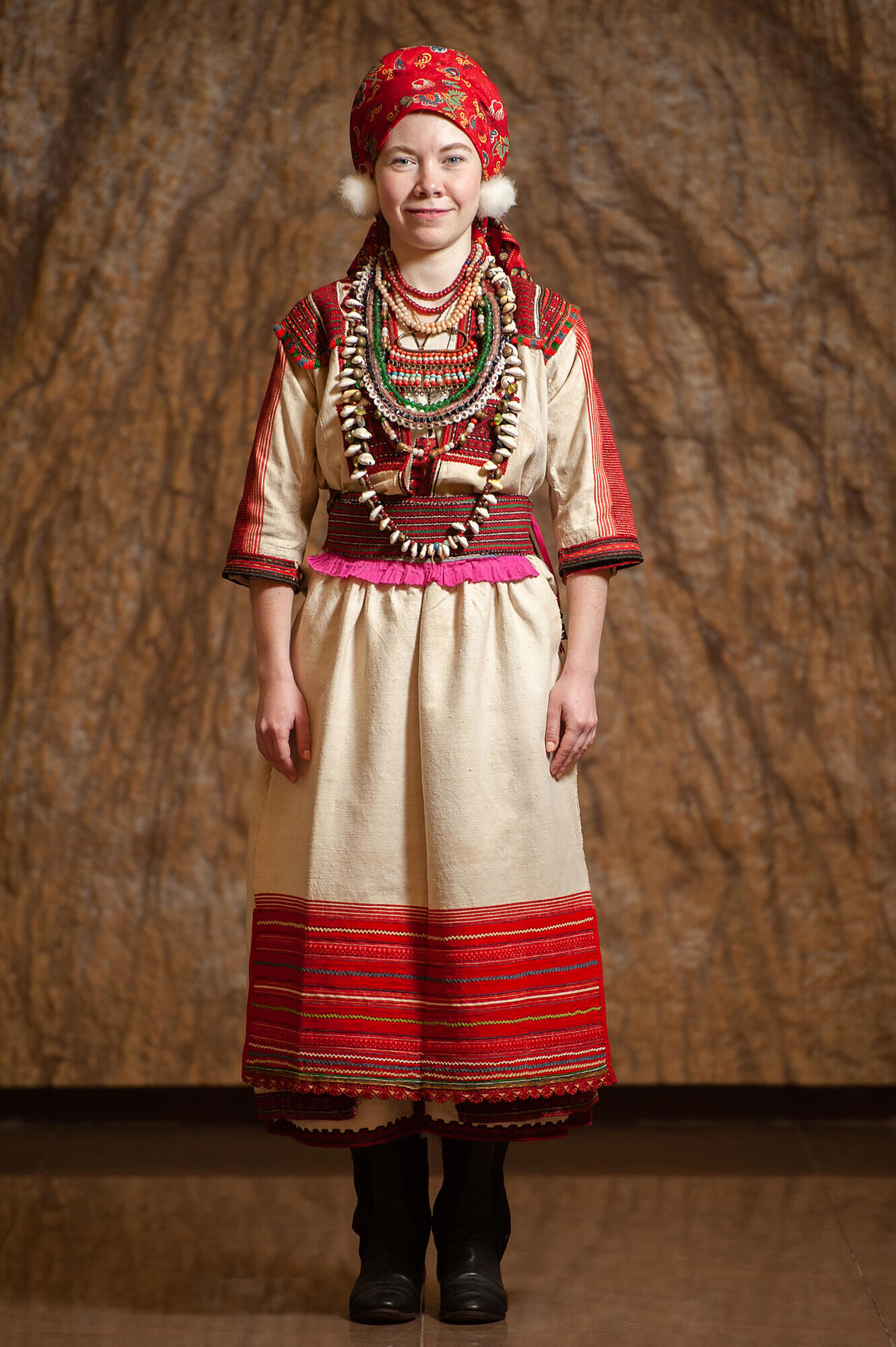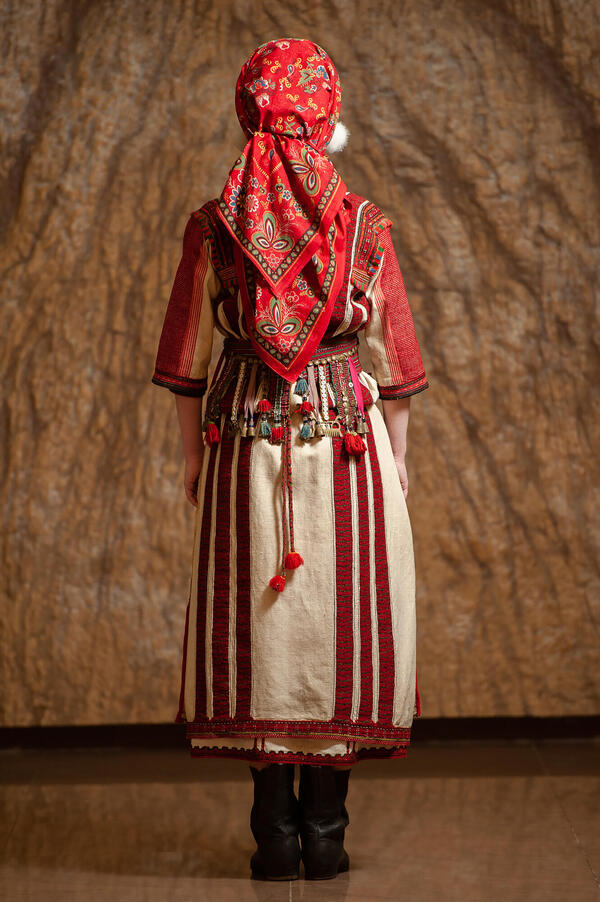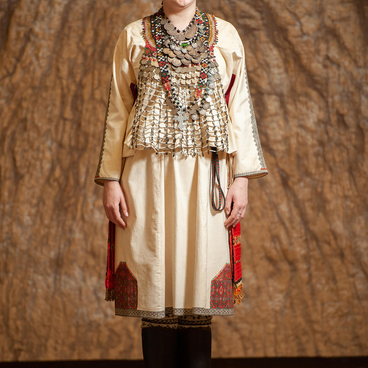The composition of the Mordovian costume of the Gorodishensky group looks especially solemn. This impression is created thanks to the silhouette, in which all decorative elements emphasize the slender and majestic female figure. The noble red color dominates in the costume. The whole coloring is enriched by means of copper plaques and spangles, which makes the costume even more festive and picturesque. Lavish embroidery is harmoniously combined with weaving and abundance of decorations.
The panar tunic-cut shirt plays a special role in the costume. The embroidery on it is made with red and black home-made woolen threads. The outfit is supplemented with an upper garment of canvas — kotuva rutzya. It is richly decorated with embroidery and weaving. Geometric decorative patterns frame and densely cover the chest on both sides of the neckline and the collar of the shirt. The sleeves are decorated with red loom weaving and counted thread embroidery.
The waist part of the costume consists of a lapkinet belt woven on planks and an apron. The lapkinet ornament is a woven black belt with metal buttons sewn on it. Vertically attached to it is a braid with bells, metal combs, strips of tightly strung beads, pendants of large beads with colorful tassels. The belt adornment is an obligatory part of this set.
Of particular interest is the ikelga patsya apron. It is sewed of two parts of canvas, its upper part is assembled and decorated with a thin woven belt, and the lower part is decorated with loom weaving, red calico, horizontal lines of red, yellow, blue and green soutache. Along the edge is a braid with gold thread and an embroidered braid with a wavy edge in dark red. The pectoral adornments are a necklace called chestnut, which are strings of beads made of cowrie shells, white transparent and black glass beads, and small buttons strung on a wire frame. The central place is taken by the syulgam pectoral ornament decorated with rows of small beads of red, white, and blue glass. The head is covered with a factory-made red shawl with stylized vegetal pattern. Complementing the costume are leather koty boots with wedge-shaped inserts of black fabric.
The panar tunic-cut shirt plays a special role in the costume. The embroidery on it is made with red and black home-made woolen threads. The outfit is supplemented with an upper garment of canvas — kotuva rutzya. It is richly decorated with embroidery and weaving. Geometric decorative patterns frame and densely cover the chest on both sides of the neckline and the collar of the shirt. The sleeves are decorated with red loom weaving and counted thread embroidery.
The waist part of the costume consists of a lapkinet belt woven on planks and an apron. The lapkinet ornament is a woven black belt with metal buttons sewn on it. Vertically attached to it is a braid with bells, metal combs, strips of tightly strung beads, pendants of large beads with colorful tassels. The belt adornment is an obligatory part of this set.
Of particular interest is the ikelga patsya apron. It is sewed of two parts of canvas, its upper part is assembled and decorated with a thin woven belt, and the lower part is decorated with loom weaving, red calico, horizontal lines of red, yellow, blue and green soutache. Along the edge is a braid with gold thread and an embroidered braid with a wavy edge in dark red. The pectoral adornments are a necklace called chestnut, which are strings of beads made of cowrie shells, white transparent and black glass beads, and small buttons strung on a wire frame. The central place is taken by the syulgam pectoral ornament decorated with rows of small beads of red, white, and blue glass. The head is covered with a factory-made red shawl with stylized vegetal pattern. Complementing the costume are leather koty boots with wedge-shaped inserts of black fabric.



